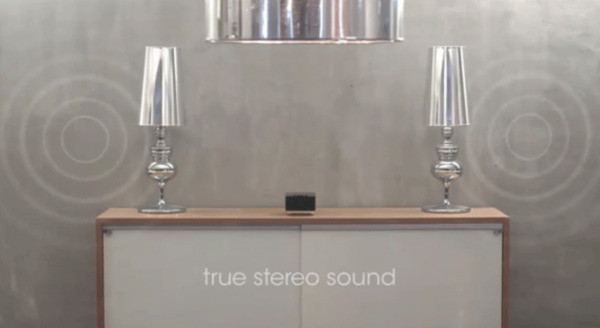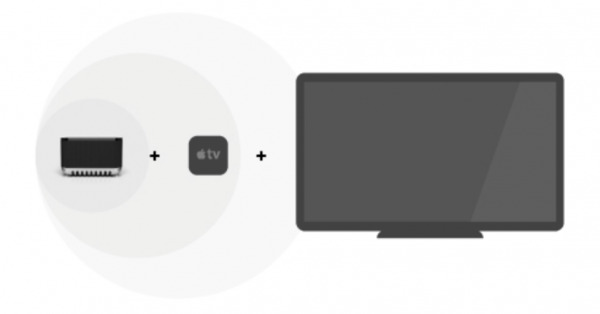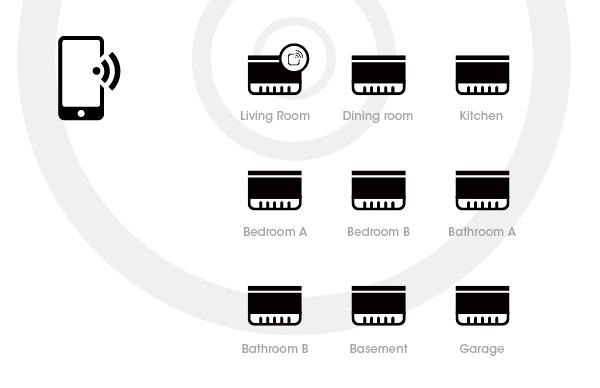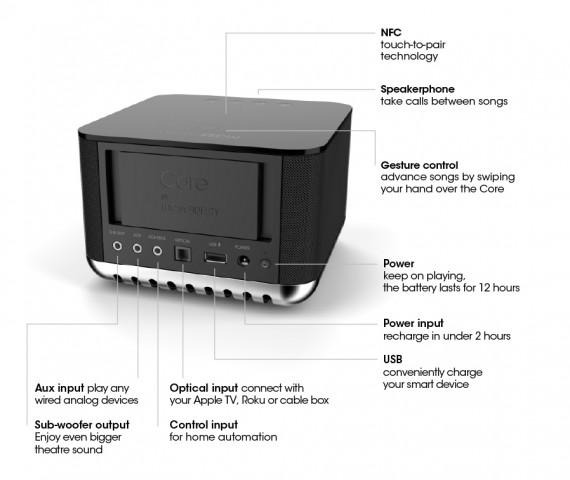The Core: Wireless home speakers with revolutionary holographic sound
The Core is a wireless speaker system that connects to your iPhone or Android device and sounds like "two widely separated full size HiFi speakers." The Core can work with any device – OS X, Windows, iOS or Android included – just so long as it has Bluetooth. According to manufacturers Mass Fidelity, it relies on wave field synthesis to produce what they're describing as "acoustic holograms": sound that literally floats in space within your room.
With Class 1 Bluetooth – with an unobstructed range of up to 60 feet - you'll be working with Advanced Audio Coding (AAC) and aptX to create the best digital sound Bluetooth is capable of delivering. The Core also supports "tap to pair" with NFC for quick connections.

You can also connect to The Core with physical cords – an optical digital connector allows you to hook up with devices like a CD player, DVD player, or Apple TV. Inside, there's a rechargeable 12-hour battery – Mass Fidelity provides international charger adapters, too – or it can remain plugged in to the wall for power.

Traditional stereo speakers rely on separation of the left and right channels, with the audio from both reaching the listener's ears at slightly different times. That way, the brain can figure out an approximation of whereabouts each component of the sound is coming from. It works, but it lacks precision and for the best experience you need to be sitting in the sweet spot between the channels.
The Core, however, uses what Mass Fidelity has dubbed Acoustic Holography to meet its "no one-sweet-spot" goal. In it, a stereo sound field is created when audio is pushed through The Core, physically recreating sound in space "like a hologram".
It's based on a technique called wave field synthesis, a method of creating a "virtual acoustic scene" by carefully modeling how sound waves act on and react upon encountering each other, and then using that understanding to effectively pinpoint a space at which the sound is created. The usual approach for wave field synthesis is to spread a large number of speaker drivers around a room, all facing inwards (though you can, in fact, create the sounds perceived as coming from outside the speaker array, by effectively modeling what impact such waves of sound would have on the space within it and then creating that instead), but Mass Fidelity flips that on its head.
The Core, then, relies on five custom speakers facing outwards at different angles: two 20W drivers on the front focused more on the midrange, two more on the sides focused more on the high frequencies, and finally a 40W driver at the bottom focused on the low frequencies. Four dedicated DSPs control the four upper speakers, managing both the degree of signal crossover between them and their individual contributions to the mid or high frequencies.
A further DSP translates a regular stereo input into Mass Fidelity's acoustic holograms. Using a stereo interpreter, The Core figures out whereabouts each aspect of the input should be placed in 3D space; a spacial rendering engine on the same DSP then controls all five of the drivers to create the necessary acoustic wavefronts that interact to place each of those aspects within the room.
Finally, there's a separate signal conditioning DSP, which is responsible for tidying things up in-between input and output. It up-samples the input audio to 24-bit, and then uses noise shaping algorithms and reclocking to remove unfriendly signal noise and jitter before the acoustic hologram system has its way with it all.
Although just one unit can fill a room with what sounds to the listener like locationally-placed sound, The Core can also create its own dedicated 5GHz wireless music network for multi-room playback, with as many as eight other units to receive and playback at "Red Book" CD quality.

On its own The Core uses Mass Fidelity's own Absolute Bass Technology (ABT) for low frequencies. However, The Core can be connected -wired or wirelessly – to an external subwoofer, whereupon it automatically hands over bass duties, and refocuses the compute power of its ARM processor and multiple DSPs on just the midrange and high frequencies.
Inside The Core you'll find gesture control. To move from one track of music to the next, you'll have only to wave your hand over the top of The Core.

On top are Broadcast, Source Selection, and Volume buttons. Around the back there's a power button, though it's only used when in portable mode: when plugged in, any button on the top of the unit will "wake up" the Core. Also on the back are the power connector, a USB to charge up your smartphone or PMP, an optical digital input (for Apple TV, Roku, or cable box), Control Input (for home automation systems), aux-in, and a subwoofer output.

You'll also be able to control your audio from the device you're playing it from, of course. Your iPhone is the controller, The Core is the speaker. A separate Soundbar Remote control is also included in the box.
This speaker system is 6-inches wide, 6-inches deep, and 4-inches tall. It's made with chromed steel, polished composites, fabric components, and comes in any color just so long as its black.

The Core was born of an IndieGogo project which raised well over 800% of its goal, starting on September 4th, 2014 with a goal of $48,000. It reached over $456,000 by September 26rd with nine days left to go. December of 2014 will be when the first units ship to Indiegogo Early Backers, while standard shipping will begin in March of 2015.
